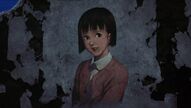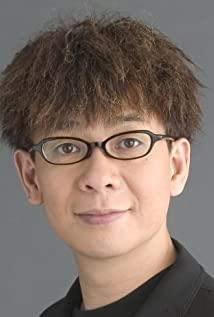is an animation director that I like very much, but it is a pity that Mr. Lee left the world early in 2010. I have to say that it is a pity for the animation industry. Mr. Jin Min has won numerous awards for his works throughout his life. Among these many animations, the author especially loves "Millennium Actress".
Interestingly, "Millennium Actress" premiered at the Fantasy Film Festival held in Montreal, Canada in July 2001, and it was not released in Japan until a year later. Although it has won quite a lot of praise from the film industry, this work was not shortlisted for the best animation Oscar, which I have to say is another pity.
The plot structure of "Millennium Actress" is quite interesting. It tells a relatively uncomplicated story in a style with another play in the play. Director Tachibana also came to Chiyoko's hermit residence in order to make a documentary for Fujiwara Chiyoko. Fujiwara Chiyoko used to be a well-known actress in the Japanese film industry, but retired at the peak of her career, making director Tachibana very confused. In a small earthquake, Chiyoko opened the chatterbox, intertwining the story between Chiyoko’s first love key man and the hurt man who blocked Chiyoko’s love path, interspersed with the ukiyo-e print-like scene transitions and dreamlike montages. Unfolded.
In the whole film, Chiyoko Theme is presented in three changes. Mode-1 appeared in Chiyoko describing her birth and growth and her girlhood. At that time, Chiyoko was in an era when the whole country was running wild, but she was just a young girl who was in love with her. What she liked was nothing more than a girl magazine full of girlish dreams. As the first form of Theme, it can be said to be slow, lazily portraying the innocence of the girl Chiyoko, an age that looks forward to the future but can only lazily expect it to come soon.
Mode-2 appeared after the end of World War II, and the music that appeared was Japan's post-war rejuvenation. Chiyoko stared blankly at the portrait of himself in the ruins, ushering in the end of Japan's battle. At this time, Chiyoko has passed through the teenage years and entered the youth period, so the music is calm and comfortable. Compared with Mode-1, it has more introverted emotions and fewer unrealistic fantasies. Generally speaking, it still gives people a lazy feeling, but this feeling is completely different from Mode-1, with more mature charm.
Mode-3 appears at the back of the film, and with Chiyoko's narrative, she finally gets older. Mode-3 has no other sounds, only the eternal water lily played by the soothing piano keys. The theme of "Millennium Actress" runs through the entire play. The theme of Chiyoko is young, mature, and old. The theme melody of each paragraph has not changed, only the mood brought by the music has changed. It has to be said that Ping Zejin's expression of the director's intentions and understanding of the screen are quite in place.
The underlying theme of the film is actually contained in the music. Although many people think that "Millennium Actress" is about the love story of Fujiwara Chiyoko, it is a story about a girl who is like a water lily who loves the key and will wait for him for a lifetime, but in the author's opinion, it is not that simple .
When Chiyoko climbed up to the ruins after the Tokyo bombing, the film played another background music key that runs through the whole play, plus the theme mode 2 played during the reconstruction after the war. It is not so much at this time. To set off Chiyoko, it is better to set off Japan. More critically, and often overlooked by the audience, the birth and death of Fujiwara Chiyoko were accompanied by earthquakes. Japan is a country with frequent earthquakes. Using earthquakes to connect Chiyoko's life is a relatively clear symbolic technique. In "The Wind Is Rising", director Miyazaki also deliberately used an earthquake to connect the encounter between the hero and the heroine.
I remember that someone said to the author that the key man is actually a Japanese-Korean. I just listened to it. In fact, the film also gave a very clear answer. In the film, it is clearly stated that the artist's hometown is Hokkaido, and Mr. Jinmin's hometown is also Hokkaido. The key man is Chiyoko's first love and pursuit of goals, and the hurt man is a symbolic existence in the whole film, and he has always hindered Chiyoko. Leaving aside the love story of Chiyoko and Keyano, from another perspective, "Millennium Actress" is a film condensing the history of Japan's modernization. As a point of view for the audience to cut into the "Millennium Actress", documentary director Tachibana also assumes the role of an ordinary person who is relatively neutral but also participates in and out of the play. The artistic form of film, because of its special way of expression, has a profound imprint of the times. The animation "Millennium Actress" runs through the whole drama, which is not only a panoramic display of the history of Japanese cinema, but also because The imprint of the times put on the film has become a condensed review of Japan's modernization process. At this point, the role of Chiyoko has more symbols that are detached from the role itself, specifically, it symbolizes the country of Japan at a sub-level. At this level, the old sergeant, the symbol of the wounded man, is self-evident, while the symbol of the key man is the opposite of the wounded man. He desires peace, persists in beauty, and finally resolutely devoted himself to the opposition to war. Go in the struggle and pay the price of life. The key man is an intention that Chiyoko has always pursued. Although the injured man has been obstructing her and the reality has continued to put pressure on her, Chiyoko has never given up. Just as she faced the beautiful portrait left by the bombing, the pursuit of peace, beauty and good in her heart became firmer, and she continued to die.
At the time of writing, I was shocked by the bad news. According to the Japanese Mainichi Shimbun on November 25, one of the prototypes of "Millennium Actress", actress Setsuko Hara, died of illness on September 5, 2015 at the age of 95. Chiyoko in the play also quit the showbiz in the 1960s, and then lived a secluded life. Setsuko Hara faded out of people's vision after starring in the last movie "The Loyalty" in 1962, and his living conditions after that were little known.
Today, we might as well revisit the "Millennium Actress" again, let us once again feel the deep meaning contained in the work.
View more about Millennium Actress reviews











